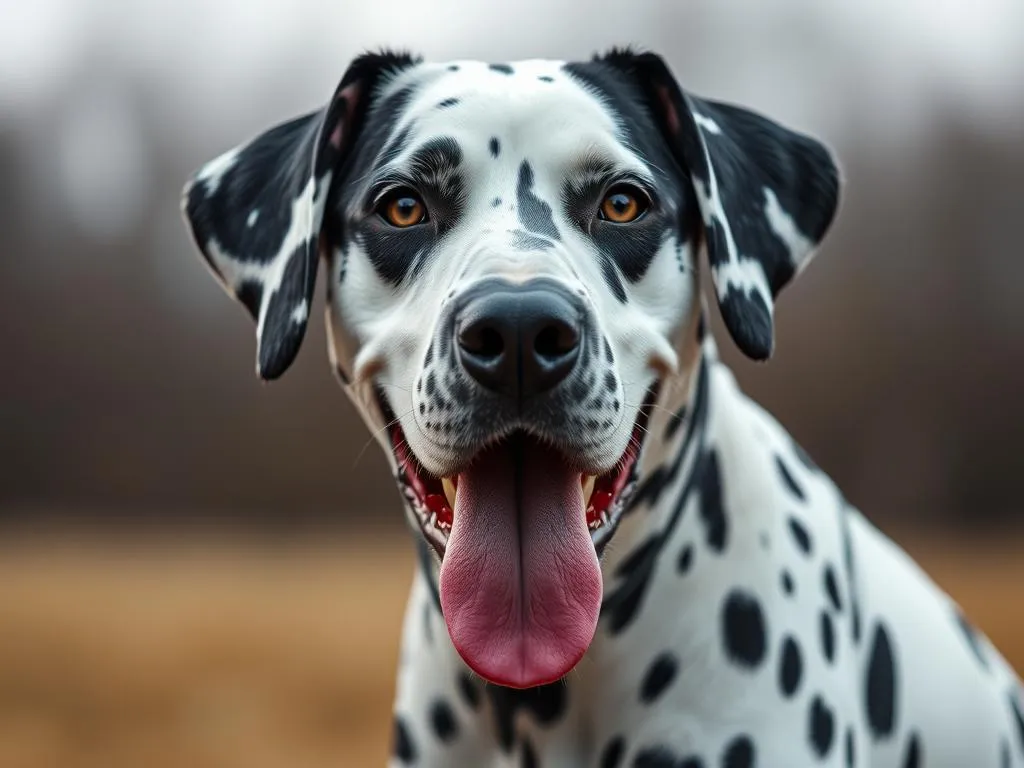
Introduction
Understanding different dog breeds is essential for potential dog owners, as each breed comes with its own unique characteristics, temperament, and care requirements. Among the many fascinating mixes is the Dalmatian Heeler, a hybrid that combines the distinctive traits of the Dalmatian and the Australian Cattle Dog, commonly known as the Heeler. This article delves into the traits, history, and care needs of the Dalmatian Heeler mix, providing valuable insights for those considering adding one to their family.
Understanding the Dalmatian Heeler
What is a Dalmatian Heeler?
The Dalmatian Heeler is a mixed breed that results from crossing a Dalmatian with an Australian Cattle Dog. This unique combination merges the striking appearance and gentle nature of the Dalmatian with the intelligence and work ethic of the Heeler. As a result, the Dalmatian Heeler is known for its energetic disposition and friendly demeanor.
Characteristics of the Dalmatian Heeler
The Dalmatian Heeler boasts a variety of physical traits that make it a standout breed. Typically, they are medium-sized dogs with a well-built, athletic frame. They often inherit the Dalmatian’s iconic spotted coat, which can come in various color patterns including black, liver, or blue merle.
In terms of temperament, Dalmatian Heelers are generally friendly, alert, and highly energetic. They thrive on interaction and require plenty of mental and physical stimulation.
Historical Background
The history of the Dalmatian Heeler is rooted in the origins of its parent breeds. The Dalmatian dates back to ancient times, known for its role as a firehouse dog and as a companion to horses. On the other hand, the Heeler was developed in Australia for herding cattle, showcasing intelligence and resilience. The combination of these two breeds has led to the development of the Dalmatian Heeler, a dog that embodies both companionship and versatility.
Physical Characteristics
Size and Weight
Adult Dalmatian Heelers typically stand between 18 to 24 inches tall at the shoulder and weigh anywhere from 30 to 65 pounds. This size range makes them suitable for various living environments, although they do best in homes with ample space to roam. When compared to their parent breeds, Dalmatians are usually taller and heavier, while Heelers tend to be slightly smaller and more compact.
Coat and Color
The coat of a Dalmatian Heeler can vary significantly, reflecting the mix of its parent breeds. They often have a short and dense coat that requires minimal grooming, though regular brushing can help manage shedding. Coloration may include the classic Dalmatian spots, commonly seen in black or liver, as well as a merle pattern characteristic of Heelers.
Health Considerations
When considering a Dalmatian Heeler, it’s essential to be aware of potential health issues. Common concerns inherited from Dalmatians include urinary stones and deafness, while Heelers may experience hip dysplasia or eye problems. The typical lifespan for a Dalmatian Heeler ranges from 12 to 15 years, with proper care and regular veterinary check-ups.
Temperament and Behavior
Personality Traits
Dalmatian Heelers are known for their vibrant personalities. They are typically friendly, loyal, and protective, making them excellent family pets. They adapt well to various living arrangements, whether it’s a bustling household with children or a quieter environment with older adults.
Exercise and Activity Needs
Due to their energetic nature, Dalmatian Heelers require a significant amount of exercise—ideally, at least 60 minutes of vigorous activity each day. Activities such as running, playing fetch, or participating in dog sports can keep them physically fit and mentally stimulated.
Socialization and Training
Early socialization is crucial for a Dalmatian Heeler to develop into a well-rounded adult dog. Exposure to different environments, people, and other animals will help them become more adaptable. Positive reinforcement training methods work best with this breed, as they respond well to praise and rewards.
Living with a Dalmatian Heeler
Ideal Home Environment
Dalmatian Heelers thrive in homes that offer space to play and explore. A house with a yard is ideal, but they can also adapt to apartment living if provided with enough exercise and mental stimulation. They typically get along well with other pets, especially if socialized from a young age.
Nutrition and Diet
When it comes to diet, it’s essential to provide a balanced and nutritious food tailored to the Dalmatian Heeler’s age, size, and activity level. High-quality dog food that includes proteins, healthy fats, and carbohydrates is recommended. Monitoring their weight and adjusting portions accordingly can help prevent obesity, a common issue in mixed breeds.
Grooming Needs
The grooming needs of a Dalmatian Heeler are relatively low due to their short coat. Brushing once a week is usually sufficient to keep their coat healthy and remove loose hair. Seasonal grooming may be necessary during shedding periods to manage excess fur.
Pros and Cons of Owning a Dalmatian Heeler
Advantages
Owning a Dalmatian Heeler comes with numerous benefits. Their friendly and loyal nature makes them great companions for families and individuals alike. They are also intelligent and trainable, which can lead to a fulfilling and interactive relationship with their owners.
Disadvantages
However, there are potential challenges to consider. Dalmatian Heelers require a significant amount of exercise, which may not be suitable for owners with a sedentary lifestyle. Additionally, their energetic nature can lead to destructive behavior if they are not adequately stimulated. First-time dog owners should be prepared for the commitment required to train and socialize this breed properly.
Comparisons with Other Breeds
Dalmatian vs. Heeler
When comparing the Dalmatian and the Heeler, distinct differences and similarities emerge. The Dalmatian is known for its unique spotted coat and historical role as a carriage dog, while the Heeler is recognized for its herding capabilities and strong work ethic. The Dalmatian Heeler combines elements of both, resulting in a lively and affectionate companion.
Dalmatian Heeler vs. Other Mixed Breeds
The Dalmatian Heeler stands out among other mixed breeds for its unique combination of traits. While breeds like the Labradoodle or Goldendoodle have gained popularity for their hypoallergenic qualities, the Dalmatian Heeler appeals to those seeking a more active and driven dog.
Choosing the Right Breed for You
Selecting the right breed involves assessing your lifestyle, living situation, and activity level. The Dalmatian Heeler can be a great fit for active individuals or families who can provide ample exercise and mental engagement.
Conclusion
In summary, the Dalmatian Heeler is a vibrant, intelligent, and affectionate breed that can make an excellent companion for the right owner. With proper care, training, and socialization, these dogs can thrive in various environments, from busy households to more serene settings. If you’re considering welcoming a Dalmatian Heeler into your life, take the time to research and connect with reputable breeders or shelters to find your perfect match.









